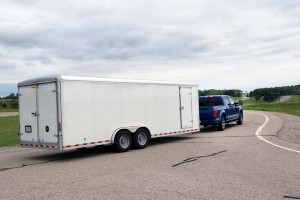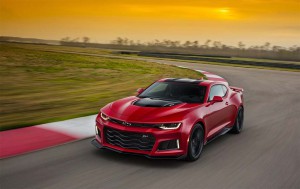When the complete makeover of the Lincoln Navigator comes to market later this year it will feature, among other things, Ford’s new 10-speed automatic transmission.
Automakers are on a binge, adding more gears in an effort to drive up fuel economy. But the approach hasn’t been without its drawbacks, consumers frequently complaining about issues like drivability. That’s the sort of headache buyers of a vehicle like the Navigator won’t readily tolerate.
To get a sense of how the new transmission performs, TheDetroitBureau.com has been clocking time in the Ford F-150, the first of the maker’s vehicles to get the first mass-market 10-speed gearbox.
(Why is Ford tinkering with bamboo? Click Here to find out.)
Not all that many years ago, manufacturers were content with automatic gearboxes using four, five, and in a few cases, six gears. The technology simply wasn’t there to go beyond that. But strict new federal mileage mandates – targeting 54.5 mpg by 2025 — have coincided with improvements in both hydraulic and electronic control systems.
With the potential to deliver at least a 5% mileage increase over its existing transmissions, Ford decided to go after something more advanced. By good fortune, General Motors had a similar goal and so, in an unusual, if not entirely unique, collaboration, the two erstwhile competitors decided to work together. They targeted both a nine-speed automatic for use on front-drive vehicles, and the 10-speed going into rear- and all-wheel-drive models such as the Ford F-150, the Lincoln Navigator and the Chevrolet Camaro ZL-1.
The Ford and GM transmissions are not identical. Engineers from the two companies agreed on the fundamentals but, once the basic gearboxes were developed, they parted ways, separately working on things like software control strategies and, of course, the hardware that pairs the new 10-speed with each maker’s engines.
In some ways, the hardware was actually the easy part, according to Kevin Norris, the manager of the 10-speed program for Ford. Consider the headaches that have plagued rival Fiat Chrysler, which has been hammered in quality and customer satisfaction surveys because its own nine-speed automatic has a tendency to hunt around for the right gear.
For Ford, “the focus was on always being in the right gear at the right time,” says Norris.

Ford's new 10-speed transmission provides a significant fuel savings, especially when tied to the 3.5-liter EcoBoost V6.
The new 10-speed uses more than 1 million lines of code, about twice as much as the older transmission it replaces. The transmission software has been tweaked to minimize hunting-and-seeking, picking the sweet spot and then anticipating the most likely next shift. The hardware side of the box has been tuned for fast, smooth shifts. Spend time behind the wheel of the 2017 Ford F-150 and you’re likely to barely notice shifts at all.
(Toyota developing heavy-duty trucks…powered by hydrogen. Click Here for the story.)
While General Motors is first rolling out its version of the 10-speed on passenger car models, such as the Chevrolet Camaro ZL1, Ford is focusing on the truck side of its line-up. Here, even modest increases will add up in the push to meet future federal fuel economy standards. But it also poses some tough challenges for the new transmission considering the sort of driving – and hauling and towing – F-150 and Navigator drivers will put it through.
Over the past few months, we’ve had the opportunity to not only take the F-150 out on local roads and highways but also run the big truck through some tougher situations. That includes a day on the Ford Proving Grounds, in Romeo, Michigan, where we began by pulling a 9,900-pound trailer up a 17% grade.
The gearbox operated almost transparently, readily welcoming the added power of Ford’s big Gen-2 EcoBoost engine. For 2017, the updated turbo-six jumped from 425 to 470 pound-feet of torque and 365 to 375 horsepower. Back-to-back assaults on that hill with both the 2016 and 2017 trucks proved especially rewarding, the ’17 model gaining a nearly truck-and-trailer-length lead by the time we reached the peak.
Even under wide-open-throttle, shifts were all but invisible. And where some other new gearboxes get busy – and sometimes buzzy – trying to figure out the best gear, Ford’s 10-speed seemed to have an intuitive ability to anticipate where it should be, even if that meant dropping from 10th to 5th gear as we launched up an even more aggressive, 29% grade.
Considering what we’ve experienced so far, we’re not surprised Ford is now set to roll out the 10-speed in the 2018 Lincoln Navigator. After years of neglect, the full-size luxury SUV is getting loaded up with all the latest technologies, and that’s not limited to its digital infotainment system. The new gearbox will give the Navigator the sort of smooth, confident ride high-line buyers anticipate, while still being ready for tough demands, whether towing and launching a high-speed pass.
Going forward, expect to see the new 10-speed fan out across the rest of the Ford rear-drive line-up, including the next-generation Expedition SUV and the Super Duty pickup family. As for the new nine-speeds, we’ll be seeing those high-mileage boxes show up with the updated Fusion and other new front-drive Ford and Lincoln models.
(Lincoln launches pilot chauffeur service. Click Here to learn more.)



